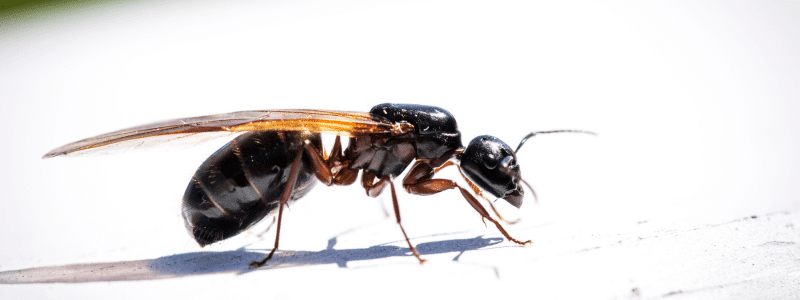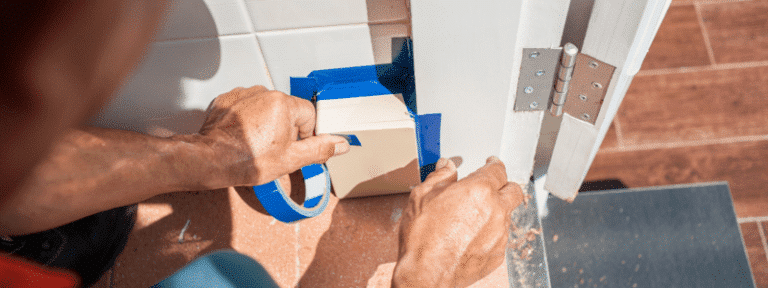Sometimes it’s hard to tell one flying insect from another without much research. Flying ants and termites are prime examples, and we’re here to help you know the difference between the two so you know exactly what’s flying around your home.
Once you’ve read up on the flying ant vs. termite difference, you’ll be able to get the proper pest control services needed to keep your home safe from either – or both.
We’ll cover the following:
- Appearance differences
- Behavior differences
- Diet differences
- Life cycle differences
- Are flying ants as bad as termites?
What is the Difference Between Flying Ants and Termites?
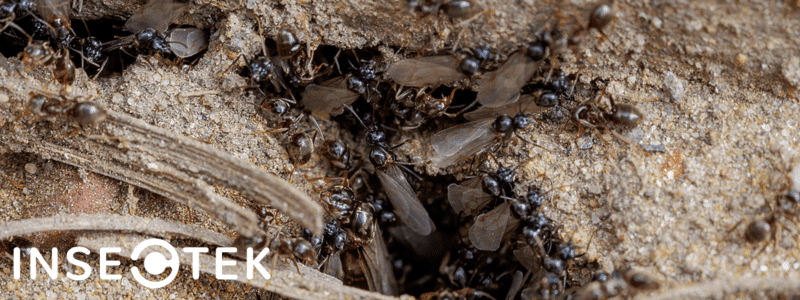
Though termites and flying ants may share some similarities at first glance, they are distinctly different pests who invade your home in their own ways. You can tell the two insects apart by looking at their appearance, behavior, diet, and life cycle.
| Type | Appearance | Behavior | Diet | Life Cycle |
|---|---|---|---|---|
| Flying Ants | – Bent antennae – Thin abdomen – Narrow waist – 3 body segments | – Swarm in large numbers during mating season, later in the summer. – Will seek a colony to stay in until they die. – Colonize outside on your property, in your garden, or near windows and doors. | – Nectar – Seeds – Insects – Crumbs | 1. Egg 2. Larvae 3. Pupae 4. Adult |
| Termites | – Straight antennae – Broad abdomen – Thick waist – 2 body segments | – Swarms in large numbers during mating season, after the monsoon season and throughout the fall – Will seek a colony to stay in until they die – Colonize near wood and eat it | – Cellulose found in wood, grass, leaves, humus, animal feces, and vegetative origin material (e.g., paper, cardboard, cotton). | 1. Egg 2. Nymph 3. Adult |
Appearance Differences
- Have bent antennae
- Front and back wings are different lengths
- Thin abdomen
- Narrow waist
- Three body segments
- Straight antennae
- Wings are all equal length
- Broad abdomen/middle body
- Thick waist
- Two body segments
Behavior Differences
Identifying an insect is crucial when looking to solve a pest infestation quickly.
Understanding the behavior differences between flying ants and swarmer termites can save you time and money as you search for proper pest control.
- Both termites and flying ants will leave their swarms in large numbers when they are ready to reproduce. This is when they will seek a new nest – AKA your home.
- Termites typically swarm after the monsoon season (mid-June to September) and throughout the fall, while flying ants generally swarm later in the summer.
- Both bugs will seek a colony to stay in until they die.
- Termites often seek to colonize near wood and eat it, thus much more destructive than flying ants.
- Flying ants are much more likely to colonize outside on your property, in your garden, or near windows and doors.
Diet Differences
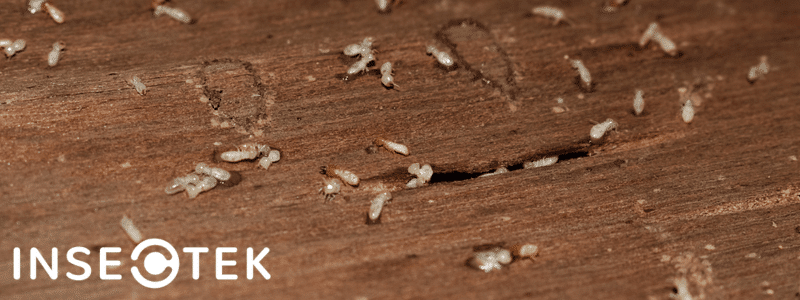
The primary food source of termites is wood. They’ll break down the cellulose fibers and derive nutrients. Termites mainly feed on cellulose found in wood, grass, leaves, humus, animal feces, and vegetative origin material (e.g., paper, cardboard, cotton). Their wide range of food sources puts homes at higher risk if these are present.
Flying ants, conversely, feed on nectar, seeds, insects, and crumbs. While flying ants don’t feed on wood, they burrow in it and weaken the structure. This can cause damage to a home, even causing damaged or rotting wood to collapse in large enough infestations.
Life Cycle Differences
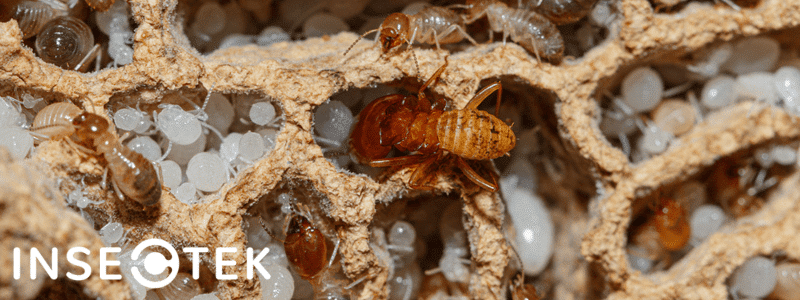
A termite life cycle consists of an egg, nymph, and adult. They typically live between one to two years, depending on their position in the social order of their colony. Worker and soldier termites may live up to two years, while queen termites can live for as long as 50 years, with peak reproduction lasting ten years.
Flying ants have four stages: egg, larvae, pupae, and adult. Not all flying ants make it to adulthood, as it’s common for nestmates to eat eggs to obtain extra nutrients. Male flying ants have a short lifespan, usually only a few days to a few weeks. Their sole purpose is to mate with the queen during the nuptial flight and will die shortly after. Females mate, shed their wings, and establish new colonies as queens. Like termites, the queen flying ants have long lifespans, up to 30 years.
Are Flying Ants as Bad as Termites?
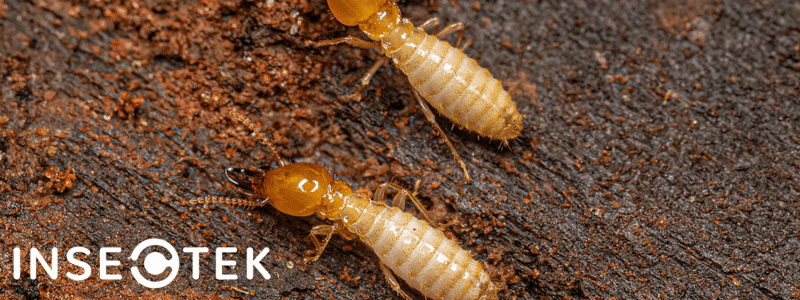
Termites are a more significant threat to your home, but flying ants still have the potential to cause problems. Flying ant swarms are an indicator of an entire colony. If left unaddressed, they dig tunnels into soft or damaged wood and get into food.
Termites are much more likely to harm a house’s infrastructure. Research shows that a termite colony containing 60,000 workers could consume the equivalent of one foot of a 2″ x 4″ piece of lumber in slightly over five months.
Published On: August 22, 2022
Updated On: June 6, 2023



